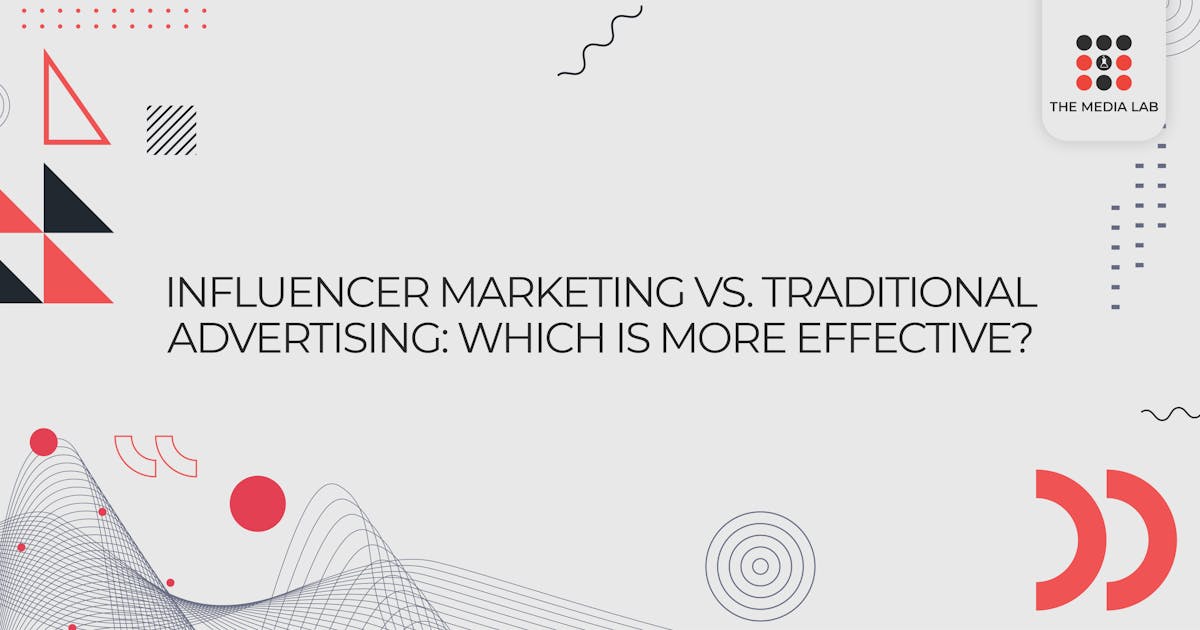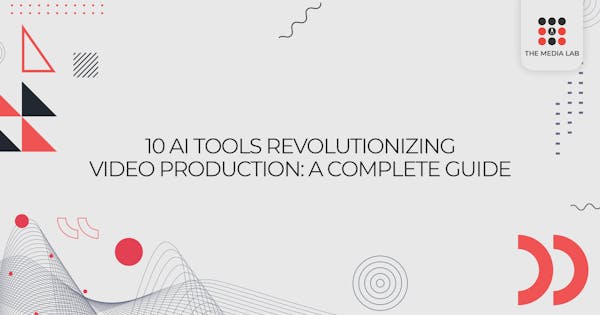Businesses are constantly exploring new avenues to connect with their target audiences and drive sales. Two prominent strategies that have gained significant traction in recent years are influencer marketing and traditional advertising. While both approaches aim to promote products or services, they differ significantly in their execution, reach, and effectiveness. In this comprehensive guide, we'll delve into the nuances of influencer marketing versus traditional advertising to determine which approach yields superior results.
Decoding Influencer Marketing
Influencer marketing involves collaborating with individuals who have a substantial social media following and credibility within a specific niche. These influencers leverage their platforms to endorse products or services to their audience, aiming to drive engagement, brand awareness, and ultimately, sales.

One of the key advantages of influencer marketing is its ability to tap into the trust and authenticity that influencers have built with their followers. Unlike traditional ads, which may be perceived as intrusive or sales-driven, influencer recommendations feel more organic and genuine, resonating with audiences on a deeper level.
However, influencer marketing also comes with its challenges. Identifying the right influencers, negotiating partnerships, and measuring ROI can be complex and time-consuming tasks. Additionally, concerns about authenticity and transparency have arisen, with some influencers facing backlash for promoting products without disclosing sponsored content adequately.
Let us dive deep into what influencer marketing unfolds.
Good side:
1. Authenticity and Trust
Influencers often have a genuine connection with their audience, leading to higher levels of trust and credibility. Their recommendations feel more authentic compared to traditional ads, resonating with followers on a personal level.
2. Targeted Reach
Influencers cater to specific niches or demographics, allowing brands to reach highly targeted audiences. This precision targeting ensures that the message reaches the right people who are more likely to be interested in the product or service.
3. Engagement and Interaction
Influencer content tends to generate high levels of engagement, including likes, comments, and shares. Followers actively interact with influencer posts, creating opportunities for brands to foster meaningful connections and conversations.
4. Creative Flexibility
Influencer collaborations offer creative flexibility, allowing brands to integrate their products or services seamlessly into the content. From sponsored posts to product reviews, brands can leverage various formats to convey their message effectively.
Other side:
1. Authenticity Concerns
Some influencers may face scrutiny over authenticity and transparency, especially if they fail to disclose sponsored content adequately. Brands risk damaging their reputation if they partner with influencers who lack credibility or authenticity.
2. ROI Measurement
Measuring the ROI of influencer marketing can be challenging, as it requires tracking metrics such as engagement, conversions, and brand sentiment. Determining the impact of influencer collaborations on sales or brand awareness may require sophisticated analytics tools.
3. Dependency on Influencers
Influencer marketing relies heavily on the influence and availability of individual creators. If an influencer's popularity declines or they become embroiled in controversy, brands may need to reassess their partnerships and strategies.
4. Saturation and Competition
The influencer landscape is becoming increasingly saturated, with brands vying for the attention of a limited number of influencers. As a result, securing partnerships with high-profile influencers can be competitive and costly.
The Critical Components of Traditional Advertising
Traditional advertising encompasses a wide range of channels, including television, radio, print, and billboards. These platforms have long been staples in the marketing industry, offering broad reach and visibility to mass audiences.
One of the primary advantages of traditional advertising is its ability to generate widespread brand exposure. Television commercials, for example, can reach millions of viewers simultaneously, making them an effective medium for building brand awareness on a large scale.
Traditional advertising also provides greater control over the messaging and creative aspects of the campaign. Brands can tailor their ads to convey specific brand values, evoke emotional responses, and differentiate themselves from competitors.
However, traditional advertising is not without its limitations. With the rise of digital media consumption, traditional channels have experienced a decline in viewership and effectiveness. Furthermore, reaching younger demographics, such as Millennials and Gen Z, who are more inclined to ad-blocking or cord-cutting behaviors, poses a significant challenge for traditional advertisers.
Good side:
1. Mass Reach
Traditional advertising channels such as television, radio, and print offer broad reach, allowing brands to reach millions of viewers or listeners simultaneously. This mass exposure is particularly effective for building brand awareness on a large scale.
2. Control Over Messaging
Traditional ads provide greater control over the messaging and creative aspects of the campaign. Brands can tailor their ads to convey specific brand values, evoke emotional responses, and differentiate themselves from competitors.
3. Familiarity and Trust
Traditional advertising channels have been around for decades, establishing familiarity and trust among consumers. Viewers are accustomed to seeing ads on television, hearing them on the radio, or encountering them in newspapers, contributing to their effectiveness.
4. Tangible Presence
Traditional ads offer a tangible presence in physical spaces, such as billboards, posters, and signage. These visual cues serve as constant reminders of the brand, reinforcing brand recognition and recall among consumers.
Other side:
1. Ad Avoidance
With the rise of ad-blocking technology and ad-free streaming services, consumers have become adept at avoiding traditional ads. They may tune out or skip commercials, diminishing the effectiveness of traditional advertising channels.
2. Limited Targeting
Traditional advertising channels lack the precision targeting capabilities of digital platforms, making it challenging to reach specific demographics or interest groups. Ads are broadcasted to a broad audience, leading to potential wastage of resources.
3. High Costs
Producing and airing traditional ads can be costly, especially for prime time television slots or high-traffic billboards. Small businesses or startups with limited budgets may find traditional advertising prohibitively expensive compared to digital alternatives.
4. Difficulty in Measurement
Measuring the effectiveness of traditional advertising can be challenging, as it often relies on indirect metrics such as brand awareness, recall, and purchase intent. Determining the direct impact of ads on sales or ROI may require extensive market research or surveys.
5. Comparing Effectiveness
When evaluating the effectiveness of influencer marketing versus traditional advertising, several factors come into play. Firstly, the level of audience engagement and trust differs between the two approaches. Influencers often have dedicated followers who value their opinions and recommendations, leading to higher levels of engagement and conversion.
In contrast, traditional ads may struggle to capture audience attention amidst the clutter of competing messages. Viewers are increasingly adept at tuning out or skipping traditional commercials, especially with the prevalence of streaming services and ad-free platforms.
Additionally, influencer marketing offers greater targeting capabilities, allowing brands to reach specific demographics with precision. By partnering with influencers whose audience demographics align with their target market, brands can ensure that their message resonates with the right people at the right time. Influencer marketing excels in driving authenticity and authenticity, as influencers integrate product recommendations seamlessly into their content. This authenticity fosters trust and credibility among followers, leading to higher conversion rates and brand loyalty.
On the other hand, traditional advertising may struggle to convey authenticity, as viewers are often skeptical of overtly promotional messages. However, traditional ads can still be effective in building brand awareness and reaching mass audiences, particularly for established brands with broad appeal.
Finding the Right Balance
In conclusion, both influencer marketing and traditional advertising have their strengths and weaknesses. While influencer marketing offers authenticity, targeting, and engagement, traditional advertising provides broad reach and control over messaging. Ultimately, the most effective approach will depend on the brand's objectives, target audience, and budget.
In today's fragmented media landscape, finding the right balance between influencer marketing and traditional advertising is key to maximizing marketing ROI. By leveraging the strengths of both approaches and integrating them into a cohesive strategy, brands can achieve optimal results and stay ahead in the competitive marketplace.
Whether it's collaborating with influencers to tap into niche audiences or launching traditional ad campaigns to reach mass markets, the key is to adapt to changing consumer behaviors and embrace innovative marketing tactics that resonate with today's audiences.
Transform your brand story with impactful influencer marketing strategy
When it comes to influencer marketing, only a select few comapnies rise to the top. At the pinnacle stands The Media Lab, the premier influencer marketing agency in Dubai. With integrated solutions tailored to each brand, The Media Lab elevates names and positions in the market, ensuring unparalleled success in the realm of influencer-driven campaigns.

